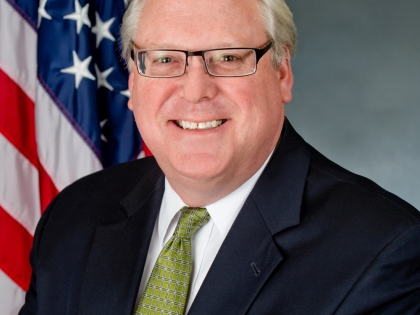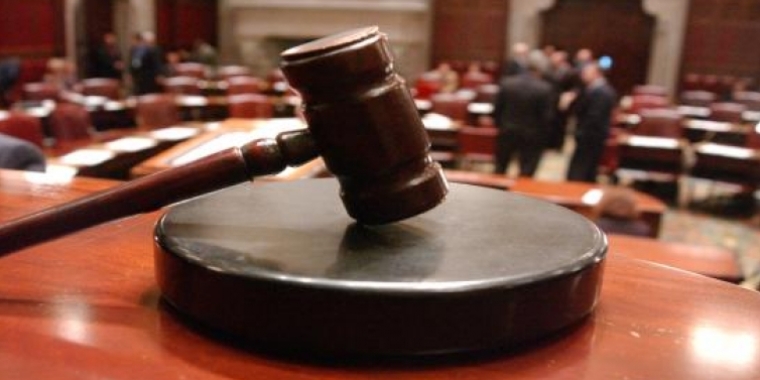
Senator O'Mara's weekly column 'From the Capitol' -- for the week of June 27, 2022 -- "Opioid crisis remains major area of concern"
June 27, 2022
-
ISSUE:
- Combating the opioid crisis

Senator O'Mara offers his weekly perspective on many of the key challenges and issues facing the Legislature, as well as on legislative actions, local initiatives, state programs and policies, and more. Stop back every Monday for Senator O'Mara's latest column...
This week, "Opioid crisis remains major area of concern"
We were reminded not long ago, as part of the most recent National Prescription Drug Take Back Day, of just how serious and deadly the opioid crisis remains across our region, state, and nation.
The federal Centers for Disease Control and Prevention (CDC) has noted the dramatic impact the COVID-19 pandemic has had on opioid addictions. According to the CDC, nearly 84,000 Americans overdosed during the latest 12-month period.
It is a stark reminder of an ongoing crisis that continues to demand attention, concern and, most of all, resources.
The annual Drug Take Back Days remain an important part of the overall prevention effort. The abuse of prescription drugs is directly tied to and in many ways responsible for the burgeoning opioid epidemic. It is incredibly important to do anything and everything we can to complement and support the efforts of our local law enforcement leaders and drug prevention coalitions to combat prescription drug abuse. These efforts include National Prescription Drug Take Back Day and other initiatives to encourage the collection and disposal of unused prescription drugs.
We remain grateful to the collection efforts spearheaded by local law enforcement and drug prevention organizations. For example, the Steuben County Sheriff’s Office and the Steuben County Prevention Coalition Opioid Committee reported the collection of more than 600 pounds of unused prescription medications during the latest Drug Take Back Day.
In 2018, I sponsored a new law, the “Drug Take Back Act” (S9100/A9576, Chapter 120 of the Laws of 2018), that established an industry-funded, statewide pharmaceutical drug take-back program. It advanced a “product stewardship” approach to the challenge of disposing of unwanted medications. Pharmaceutical manufacturers are responsible for all of the costs of the initiative including public education and awareness, as well as the collection, transport, and proper disposal of unwanted drugs. The Act further requires chain pharmacies and mail-order pharmacies to provide consumers with on-site collection, prepaid mail-back envelopes, or other federally approved methods to encourage safe drug disposal. The Act created a unified, statewide drug take-back program aimed at saving government and taxpayer dollars, reducing medication misuse, and further alleviating the improper disposal of unused medications.
As far back as 2014, as members of the Senate Task Force on Heroin and Opioid Addiction, we conducted regional forums, including in Elmira and Penn Yan, on the burgeoning heroin and opioid crisis. In a series of 14 roundtable discussions held throughout the state, we heard directly from law enforcement, drug addiction counselors, treatment providers, social services and mental health professionals, and other experts -- as well as recovering addicts and family members who lost a son or a daughter or a grandchild or another loved one -- about the complex range of challenges our communities were facing and how best to address them.
Without fail, even then, it became clear that there was a lack of education and prevention programs, as well as treatment and recovery services.
Consequently, it was important news during the closing days of the 2021 legislative session when the Senate and Assembly unanimously approved a new law establishing what is known as the “Opioid Settlement Fund.”
The new law, which I helped co-sponsor and strongly supported, is beginning to be effective.
The creation of the Opioid Settlement Fund finally ensured that any funding the state receives from opioid-related lawsuit settlements and other actions against opioid manufacturers and distributors must be dedicated to education, prevention, treatment, and recovery programs and services in communities across the state.
Counties throughout New York State, including right here at home in the Southern Tier and Finger Lakes regions, have been on the front lines of battling this epidemic.
Upon the law’s approval, the Executive Director of the New York State Association of Counties (NYSAC), Stephen Acquario, said that it “marks a major turning point in the battle against the opioid epidemic that has been raging through our state and nation, leaving a trail of death, destruction, and heartache, long before the emergence of COVID-19. This legislation will pave the way to begin the process of healing and recovery by ensuring that any funds received by the state are used to support drug treatment and prevention efforts.”
The new Opioid Settlement Fund and a renewed commitment to combating this epidemic that can stem from it promises to enhance our efforts to rebuild shattered lives and prevent countless tragic deaths.
Specifically, the new law (S7194/A6395, Chapter 190 of the Laws of 2021) states that “all funds received by the state as the result of a settlement or a judgment in litigation against opioid manufacturers, distributors, dispensers, consultants, or resellers shall be deposited into the opioid settlement fund, and that such funds shall not supplant or replace existing state funding.”
The first round of payments is underway from the state’s opioid settlements. In April, the state attorney general announced the following initial funding for area counties:
- Allegany County, $293,856;
- Chemung County, $734,827;
- Schuyler County, $124,216;
- Seneca County, $230,746;
- Steuben County, $678,280;
- Tioga County, $323,499;
- Tompkins County, $702,406; and
- Yates County, $147,872.
Additional distributions of funding to localities will be made later this year, according to the attorney general, who also notes that New York has already collected upwards of $1.5 billion in settlements.
The creation of the Opioid Settlement Fund put a stop, in this instance, to a long-standing and questionable practice of New York State taking settlement funds and dumping them into the state’s general fund to be used for any purpose at all. That practice would be especially unacceptable when the opioid crisis has been ravaging families and communities.
The opioid epidemic has cost thousands of lives and remains a public health emergency that will continue to demand increased resources for education and prevention, and treatment and recovery.
###



